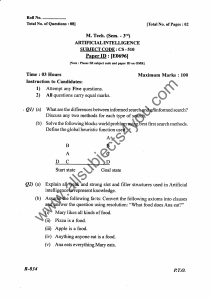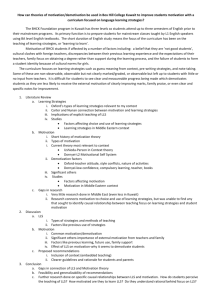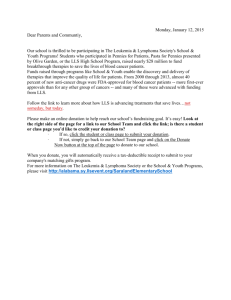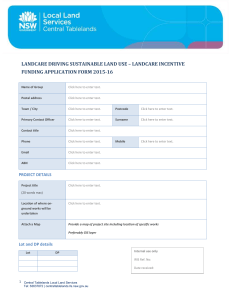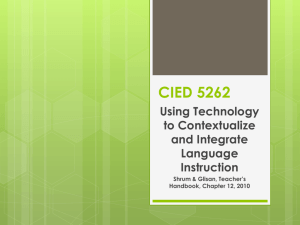Generic PowerPoint Presentation Title Page
advertisement
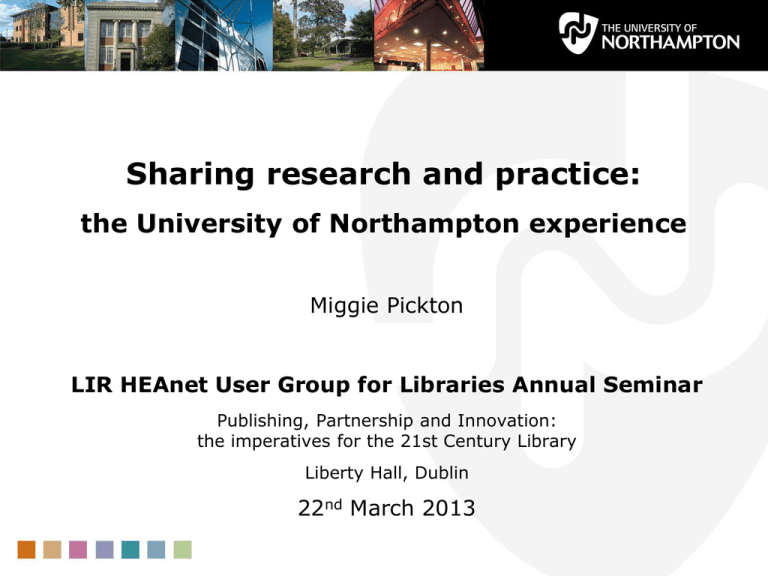
Sharing research and practice: the University of Northampton experience Miggie Pickton LIR HEAnet User Group for Libraries Annual Seminar Publishing, Partnership and Innovation: the imperatives for the 21st Century Library Liberty Hall, Dublin 22nd March 2013 Outline • Context – LIS research at the University of Northampton • Why do research? • Research in LLS • Sharing the findings • The LLS conference • Making an impact 2 The University of Northampton • About The University of Northampton: – Achieved university status 2005 – Committed to delivering “outstanding life changing opportunities in education, underpinned by a culture of entrepreneurship, purposeful research and social enterprise recognised around the world for its originality and impact” [1] • Some facts and figures: – University: approx 14,000 students; 2,000 staff – 6 Schools: Arts; Business; Education; Health; Science and Technology; Social Sciences – Library and Learning Services: 75 staff (55 FTE) in six teams [1] Raising the Bar Strategic Plan 2010-2015 Why do research? • Research is positively encouraged in LLS because: – it informs service development – it demonstrates our engagement with the research ambitions of the university (and we do what they do) • But we also do it because: – it provides interest, challenge and variety, increases job satisfaction, and supports professional development – it provides evidence of service value, facilitates engagement with users, supports decision-making, solves problems, and wins us recognition (internally and externally) 4 Research in LLS Reading lists as pedagogical tools Transitions in Higher Education Students’ use of learning spaces Developing the VLE Use of video to enhance learning and teaching Repositories and digital preservation Supporting international students Reading lists as pedagogical tools Boutique teaching and training Users’ experience of ebooks Reading groups for community Visual literacies engagement Researchers’ data management practice Mobile learning 5 Sharing the findings – which audience? • Need (or want) to reach several audiences: – Internally – departmental colleagues; service users (students, academic staff, professional services); senior managers (budget holders!) – Externally – professional colleagues; funders; policy makers; local community • The intended audience(s) and the purpose in targeting them should underpin any dissemination decisions • Who, why, what, where, when, how? 6 Sharing our research externally • LLS staff encouraged to write articles and submit conference proposals • Start simply: – Present at local events or with a colleague at bigger conferences – Gain experience of writing through book reviews, short articles in practitioner press, conference posters etc. LLS research and professional activity 2010-2012 4 3 Books and book chapters 6 20 3 7 40 Articles and book reviews Conference presentations (international) Conference presentations (national) Posters Reports • Build confidence and reputation gradually 7 Sharing our research internally • Opportunities for internal dissemination: – Departmental, School and University meetings – LLS events and seminars – Internal newsletters, emails, social media – Academic liaison • But not reaching all our internal audiences as well as we wished • So we decided to organise our own LLS conference... 8 LLS Conference – June 2012 • Purpose: – To share research findings with LLS colleagues – To promote ‘librarian as researcher’ to academic colleagues – To showcase the work of the department to professional colleagues – To celebrate our research successes • Supported by professionally designed publicity materials and a conference blog 9 LLS Conference – on the day • Introductions from the Vice Chancellor (on video), Head of Library and Learning Services (LLS) and external speaker • Four types of presentation: research papers (6), work in progress (2), posters (12) and ‘minute madness’ (12) • Banners and posters emphasised range of LLS research outputs and professional contributions • Presenters (26 in total) represented all parts of LLS • Event supported by a large team of LLS volunteers 10 LLS Conference - impact • Attended by 36 LLS staff, 27 academic and support staff from UoN and 23 librarians from across the UK (Yorkshire, Kent, Dublin ...) – many more than the 30 originally hoped for! • Hugely successful: – Feedback overwhelmingly positive from all audiences – Tremendous ‘buzz’ on the day translated into huge amount of pride among LLS staff and enthusiasm for new research activity – Large number of hits on conference blog – Invitation for conference blog to archived in UKWA – Received a CILIP PPRG Silver award for marketing 11 LLS research - impact • ‘Scaffolded’ approach to teaching information skills – widespread interest from other universities; approach adopted elsewhere at UoN • Reading lists – huge interest at LLS conference; VC became involved; subsequently informed implementation and use of new reading lists software (Aspire) • Learning spaces – informed refurbishment of library; library staff now recognised as knowledgeable in this area; prompted further research activity in collaboration with academic colleagues • Transition out – raised awareness of the risks and benefits of using social media as students complete their studies and look for employment 12 LLS research - impact • Research data – results underpinned institutional research data policy and subsequent RDM activity; Northampton selected to be one of the DCC’s ‘institutional engagements’ • Mobile apps – Learning Technology Team developing strong reputation in field; colleague left soon after the conference for an exciting new job with Blackboard • User experience of E-books – findings fed back to supplier for subsequent enhancement of product • Delivery of maths tutorials online – this funded project demonstrated to funder and university that this method of delivery was not popular with students so not worth pursuing 13 Questions? Miggie Pickton Research Support Librarian miggie.pickton@northampton.ac.uk 14
